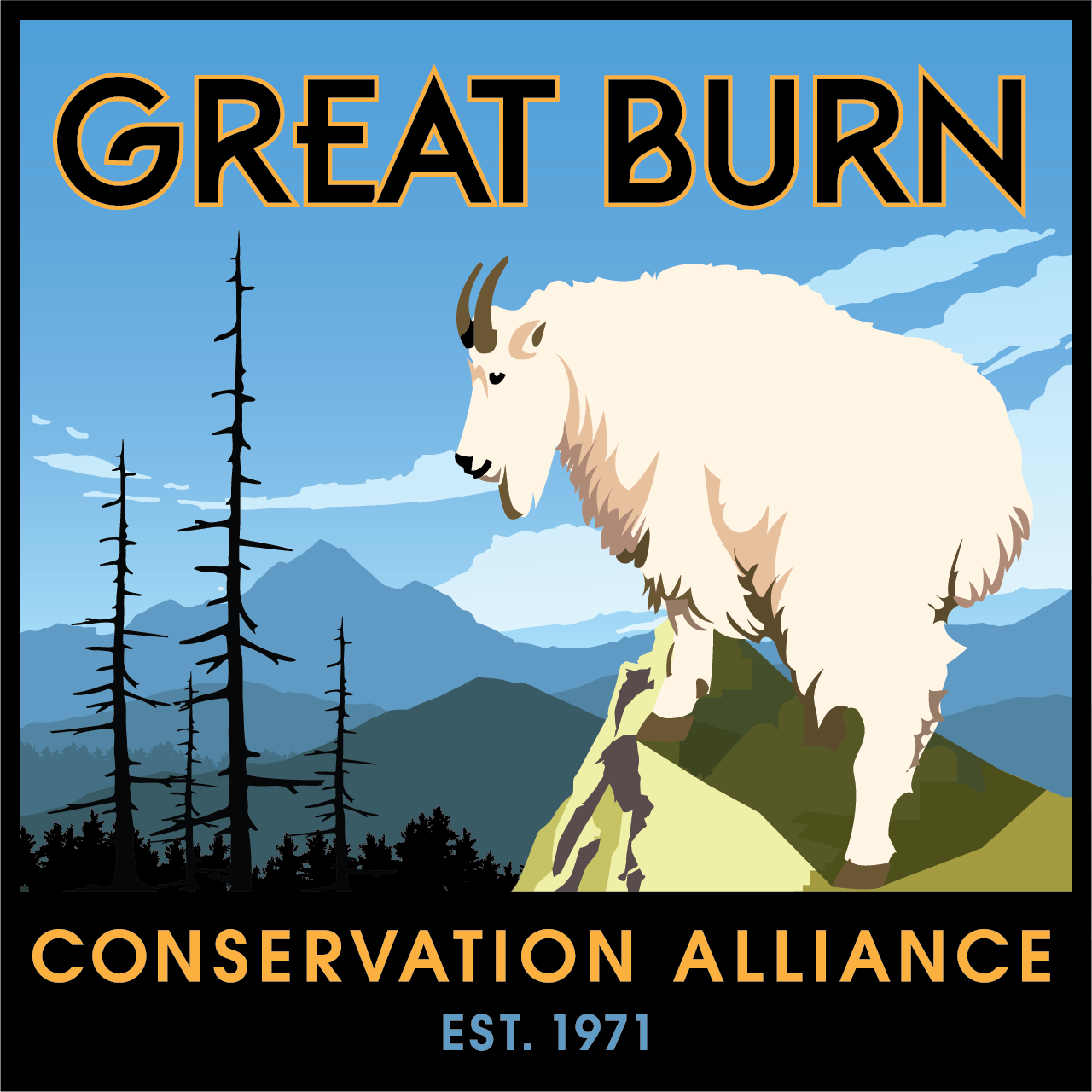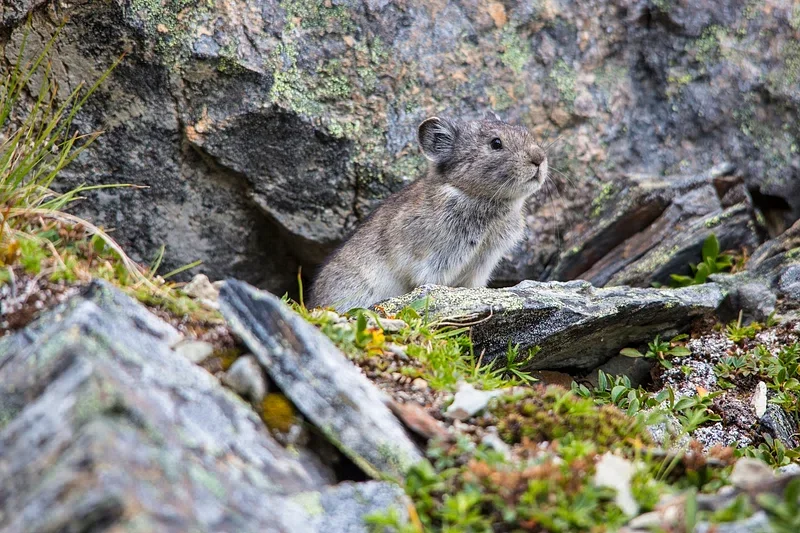Hello! My name is Micah Freeman and I am part of the weed restoration crew. As a wildlife biology student at the University of Montana, it has been a pleasure to spend time in this gorgeous area, a far cry from my hometown of Fort Worth, Texas. This week is my turn to share some recent news in the Great Burn area. My coworker, Kalle, and I were doing some vegetation surveying with Chris Prange in a meadow in the Kelly Creek drainage. As we hiked along to our destination, we could hear it in the distance.
“Eeep!”
Image courtesy of Montana Fish Wildlife and Parks
We looked around, and tucked between two rocks is this tiny, round animal, no bigger than a potato, with the softest-looking fur and bright, curious eyes. In its mouth? A huge mouthful of wildflowers almost bigger than its own head.
That’s a pika–nature’s tiniest alpine gardener and one of the toughest animals you’ll ever meet. Because these little guys are so enduring and interesting, I’d like to share some facts about them, and how they are great indicators of a happy environment in the Great Burn.
Why Pikas Matter
Pikas are incredible survivors. They live only in high, rocky places, where temperatures are cool year-round. Most often, they are found in talus places alongside our favorite alpine lakes. They don’t migrate and don’t hibernate. Instead, they stay active all winter long under the snow, surviving by spending their entire summer gathering food. They create huge hay piles under the rocks, made from every flower, grass, and leafy stem they can find. Some of their hay piles can weigh over a kilogram, which is heavier than the pika itself!
Pikas as Indicators of Ecosystem Health
Pikas are a climate indicator species, meaning that their health is a direct reflection of the health of their mountain home! Because they can't survive in warm conditions, the existence of a healthy pika population is a sign that the immediate surroundings are still cool enough for them and other species. Their dependency on specific alpine flora for diet also makes them good bioindicators for the condition of areas they eat in. Pikas are also called "ecosystem engineers" as their burrowing and abandoned hay stacks contribute to enriching the plant diversity of species and soil nutrients in the area.
Image courtesy of National Park Service
The Threat of Invasive Weeds
Invasive weeds pose a significant threat to pikas by disrupting their food supply. Pikas have a varied diet consisting of native grasses, sedges and forbs. The invasive weeds we work to remove have the potential to outcompete and replace native plants. If the percent of invasive weeds increase in their habitat, then there may be a corresponding decline in native plants. This can really impact the amount of food they collect to try to survive all winter. By controlling invasive weeds in the Great Burn, we are directly contributing to the well-being of the pika population and helping to preserve the alpine meadows they call home. It's a small effort with a big impact!
Thanks for reading!
Micah



